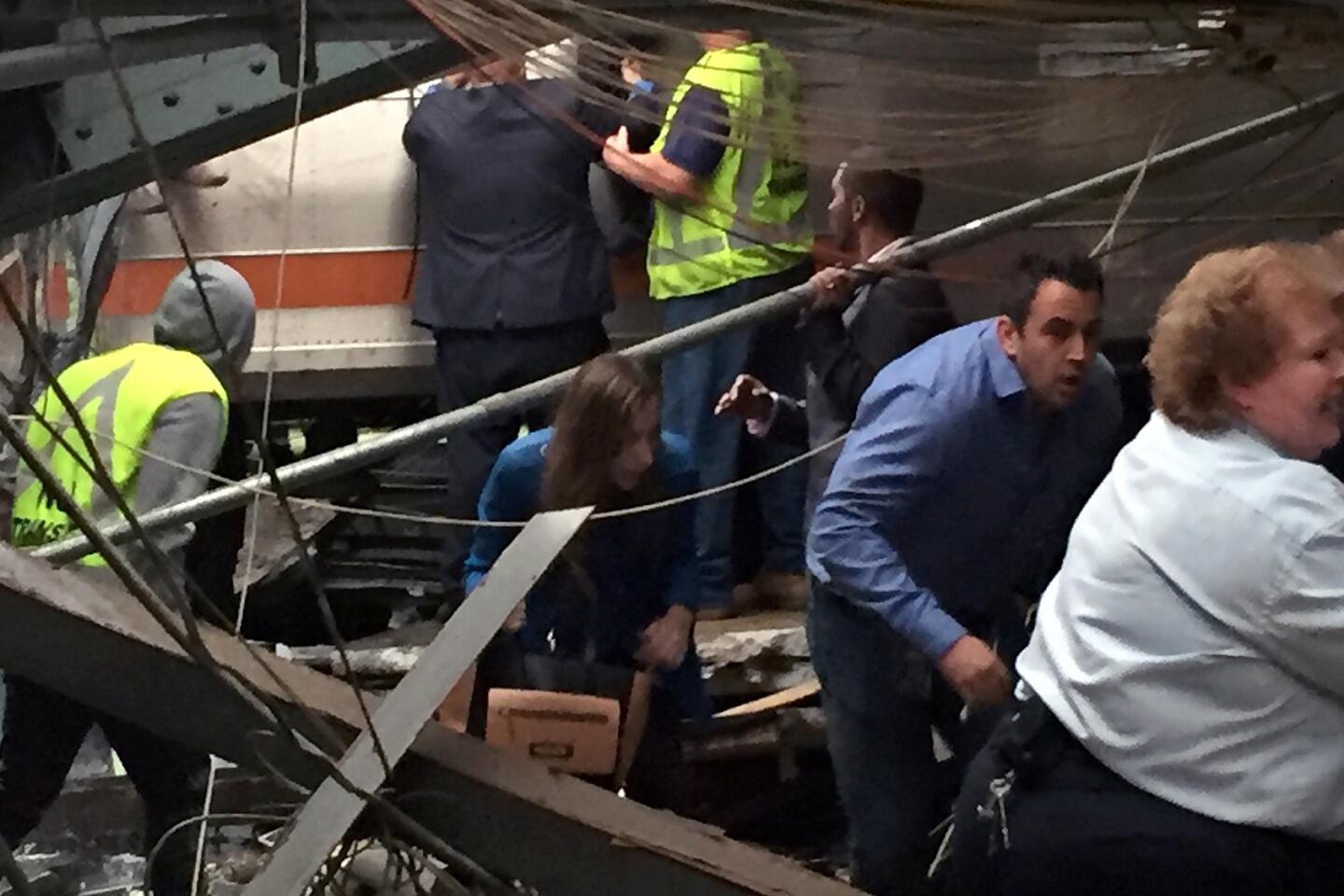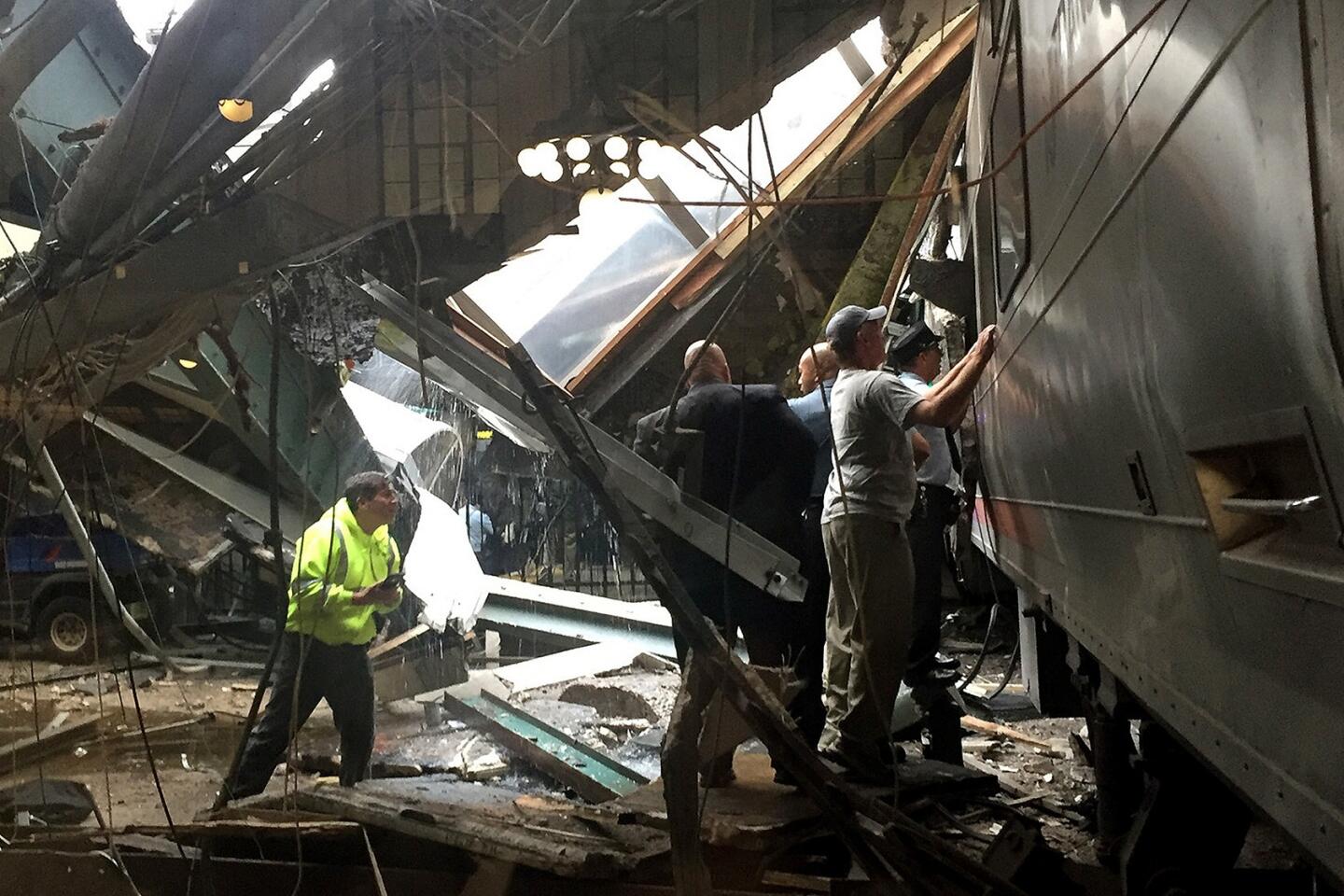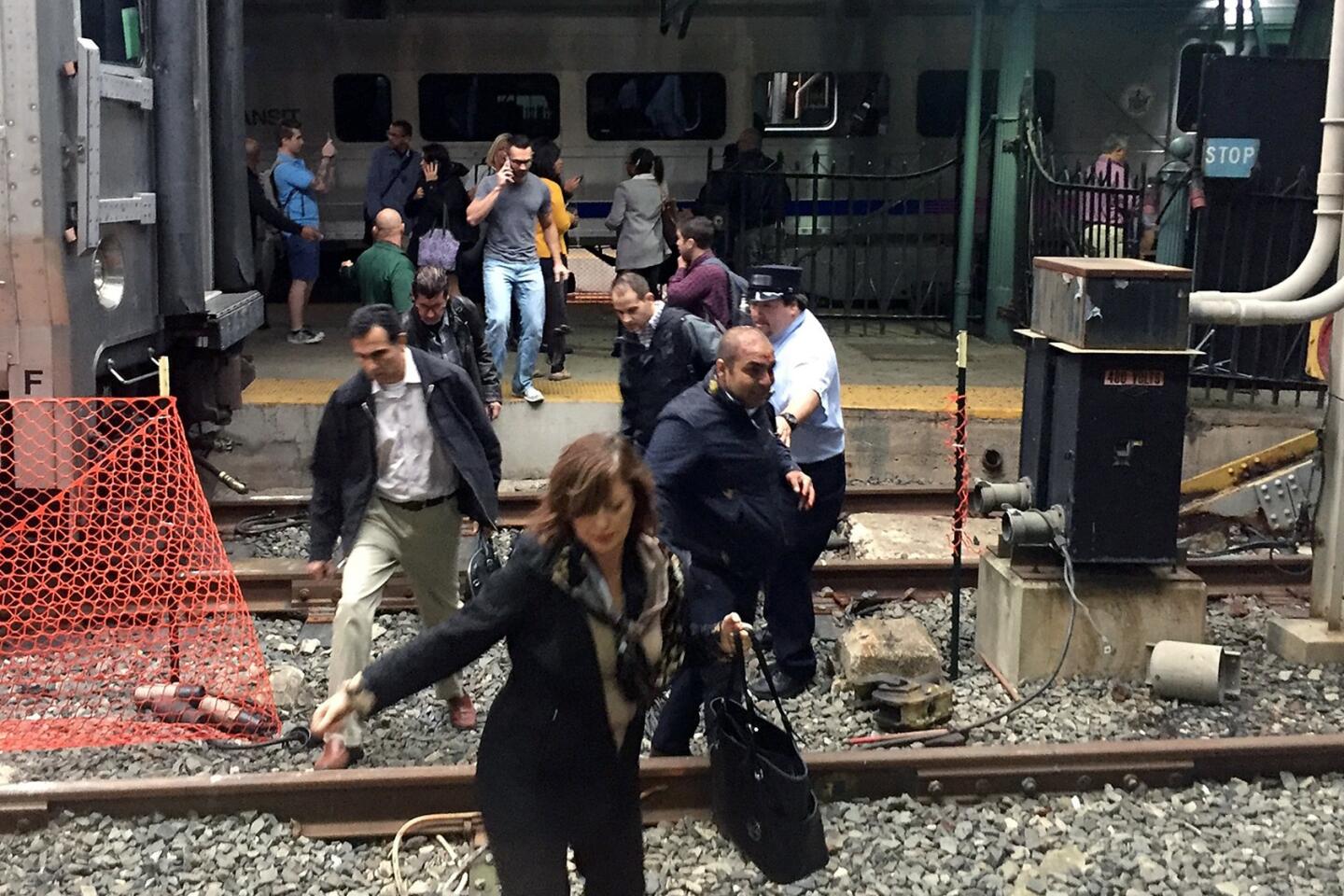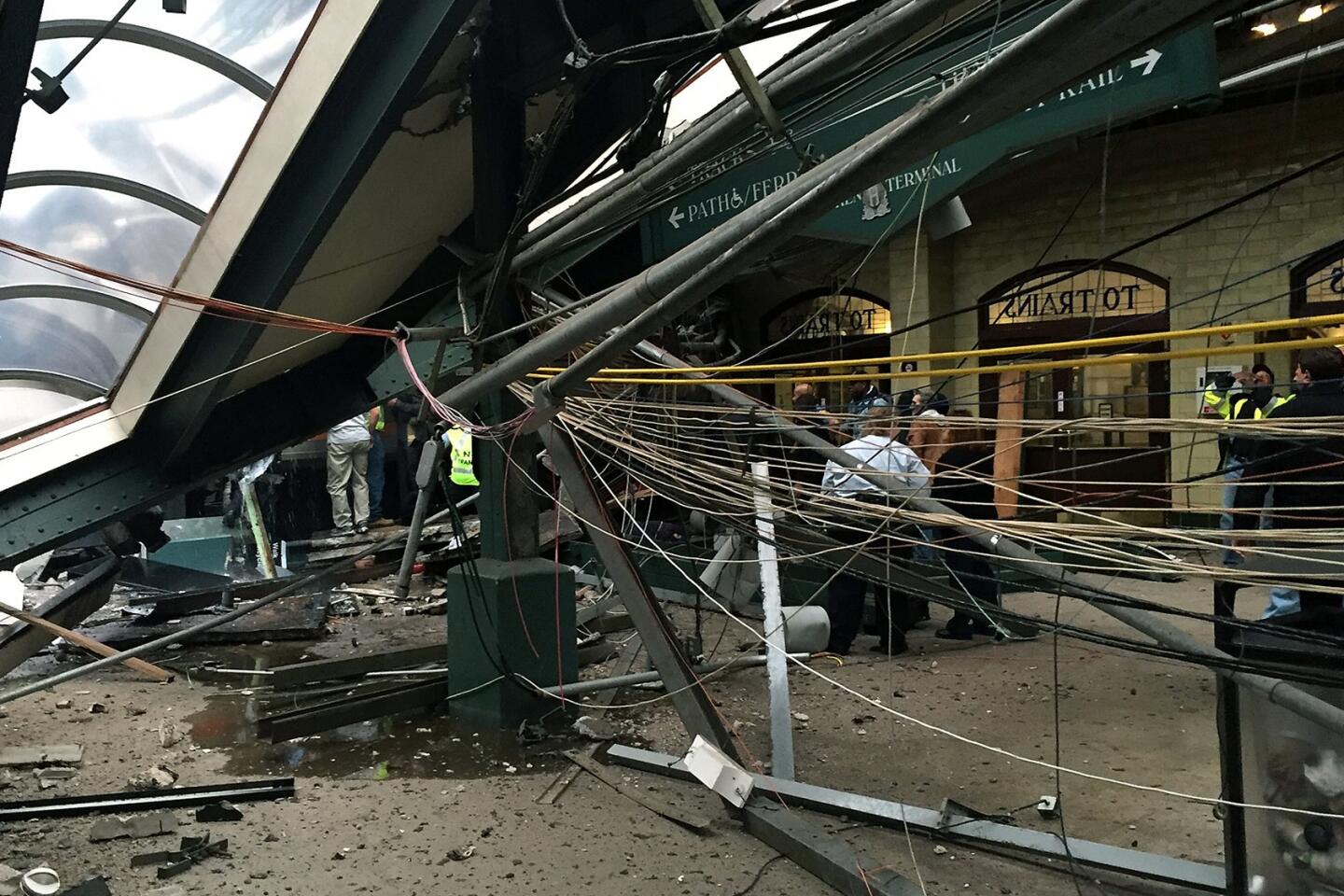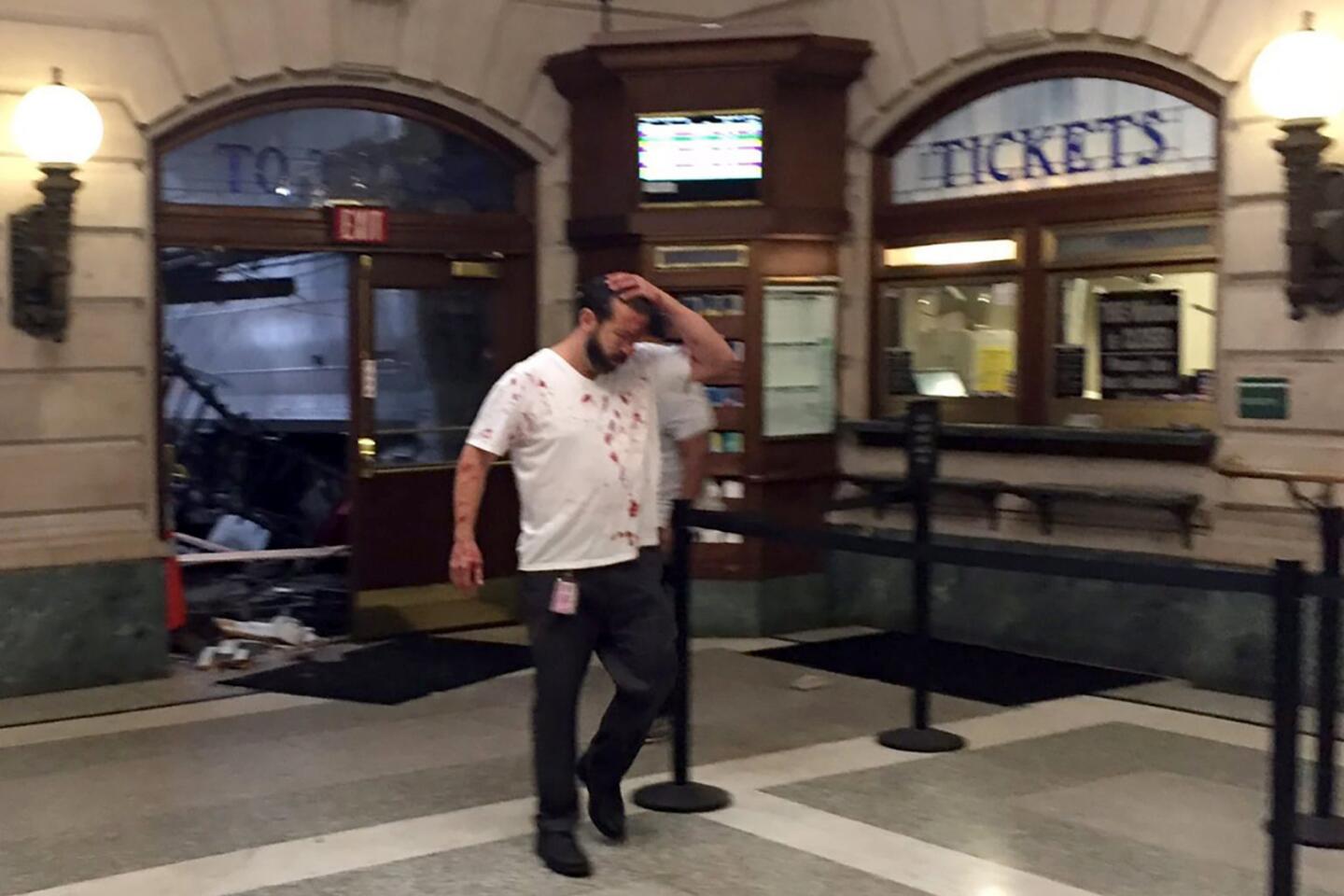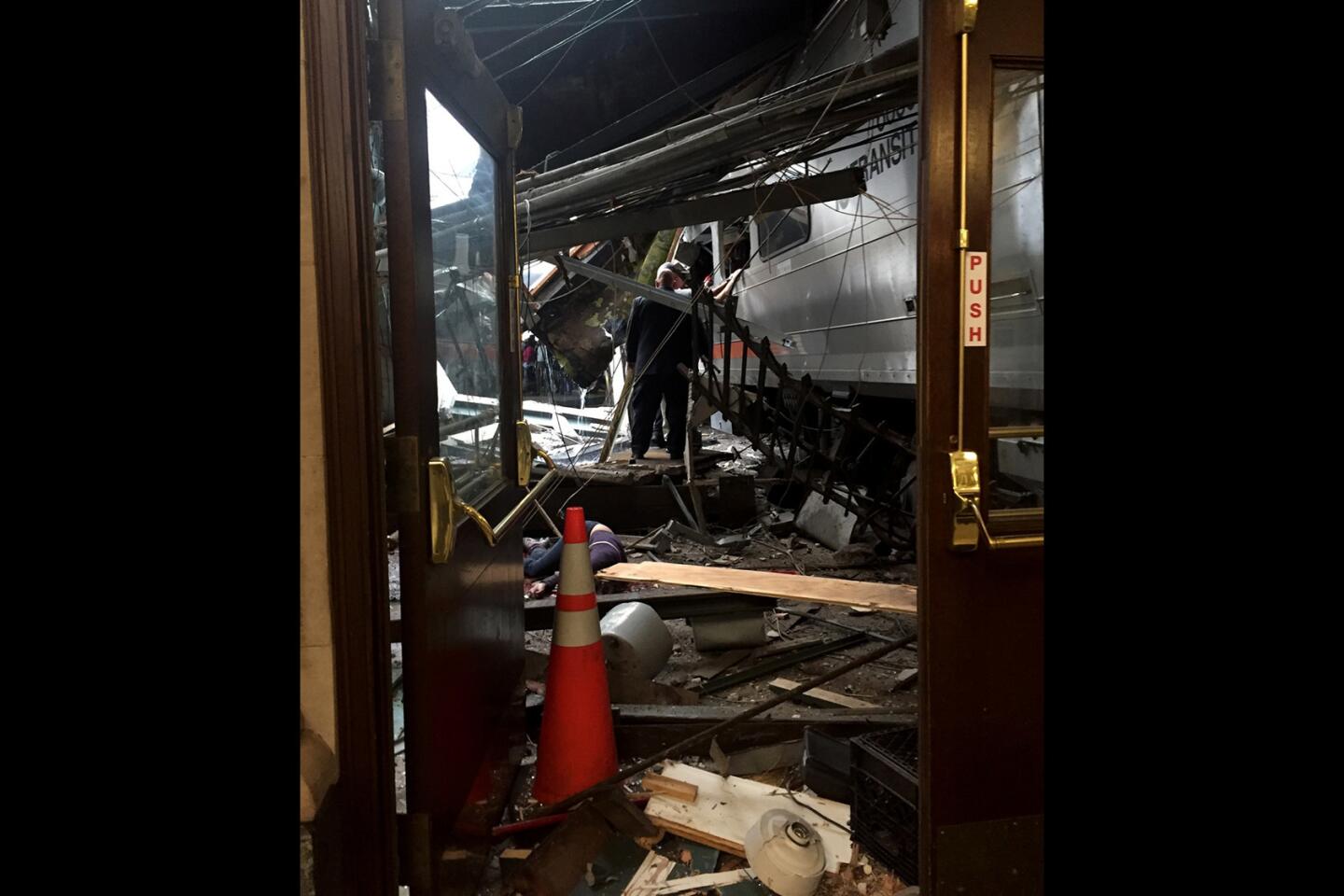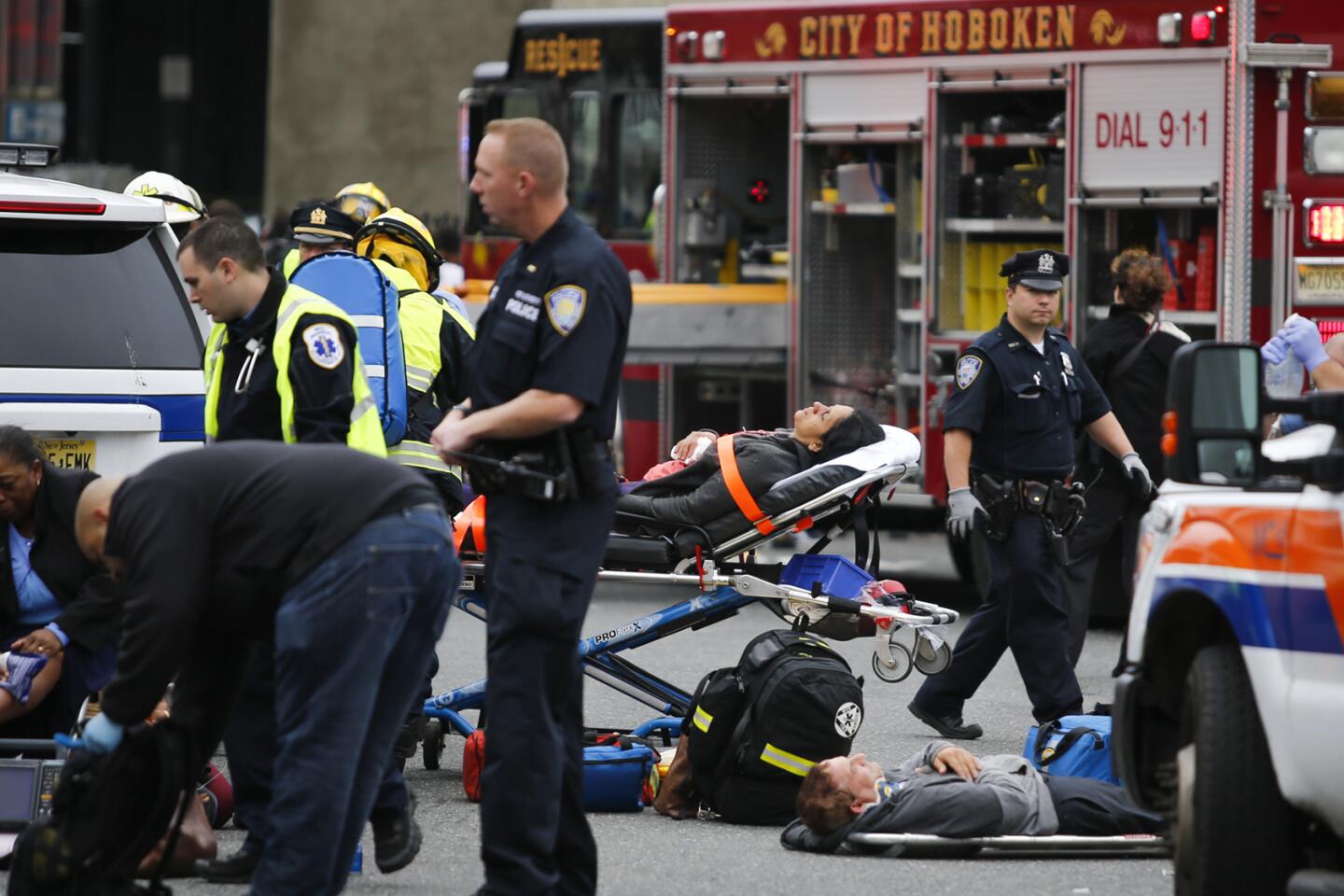‘It sounded like a bomb’: New Jersey train crash kills 1, injures more than 100
Investigators are examining why a packed commuter train barreled into a train station at such a high speed that it flew onto the platform and knocked down a ceiling, leaving one person dead and more than 100 injured.
The crash took place at the Hoboken Terminal, just across the Hudson River from Manhattan, at the height of rush hour, about 8:45 a.m. Thursday.
Rescue workers were able to pull the critically injured engineer out of the front of the train and were questioning him about why the train didn’t stop. He was identified as 48-year-old Thomas Gallagher, according to New Jersey Transit.
Transit officials also identified Fabiola Bittar de Kroon, 34, as the woman who had been waiting on the platform and killed when a ceiling supported by columns knocked out by the train collapsed on top of her.
In May 2011, a similar accident took place at the Hoboken station when a train traveling at an excessive speed plowed into the bumper post at the end of the platform. Thirty people were injured in that accident.
In past crashes of this type, the cause has been a lack of attention by the engineer or an incapacitating event such as a heart attack. But in the wake of a pair of explosions in New York and New Jersey this month, investigators will also consider sabotage or terrorism, although authorities said there was no evidence of either.
“We have no indication that this is anything other than a tragic accident, but we are going to let the law enforcement professionals pursue the facts,’’ said New Jersey Gov. Chris Christie at a news conference at the station.
“The train came in at much too high a rate of speed, and the question is, why is that?” said Christie.
Witnesses described passengers climbing out of the windows of the train, bleeding from their heads and limbs. The station looked like it had been bombed, with the collapsed ceiling and mangled beams twisted over the tracks, the smell of burnt metal heavy in the air.
“It was horror,” said William Blaine, a train engineer who had been at a nearby Dunkin Donuts when the train slammed into the station. “It was a kaboom, like an earthquake. It sounded like a bomb.”
Passengers staggered out of the train with head and leg injuries amid live electrical wires and running water, he said.
Blaine said typical railroad protocol would have required trains to operate at no more than 10 or 15 mph in the area, slow enough to “stop in time.”
The Hoboken Terminal, an ornate 1907 building with a green cooper roof on the Hudson River, is the last stop for hundreds of trains that come in from New Jersey and upstate New York. About 50,000 people per day pass through here daily, usually commuting to New York City by ferry or through a line that passes under the river.
Normally trains slow down and stop at a bumper where they discharge their passengers. But Mike Larson, a New Jersey transit employee, told television reporters that the train appeared to be going about 30 mph.
“He went straight through the bumper block, through the air and took the ceiling out,’’ said Larson. “It was just horrific, an explosion of concrete dust and electrical wires.’’
The train that smashed into the station was identified as New Jersey transit train number 1614, which originates in Spring Valley, N.Y., and passes through northern New Jersey. It carried 250 people, many of whom were standing amid the rush-hour crowd.
Passengers said they quickly realized that the train was going too fast.
“I thought to myself, ‘Oh, my God, he’s not slowing up, and this is where we usually stop,’” Linda Albelli, 62, told Reuters. “‘We’re going too fast.’ And with that there was this tremendous crash.”
When the train hit the bumper, passengers said, their phones flew out of their hands, their glasses off their faces. Most of the injured were expected to be released from the hospital Wednesday night.
The condition of the train was so precarious that emergency crews had not removed the event recording device from the engine car, said Bella Dinh-Zarr, vice chairwoman of the National Transportation Safety Board, which has opened an investigation into the crash. She said there was also concern about the possibility of asbestos exposure from the station’s canopy that collapsed atop the train.
Dinh-Zarr said at a news conference Thursday that the engineer had been released from the hospital and that investigators would be interviewing him. That interview, along with information from the data recorder, should provide answers to why the train was traveling so quickly.
The accident also brought up the question about why the railroad had not installed the congressionally mandated safety system known as positive train control that uses satellites and computers to prevent trains from traveling too fast or missing signals.
“That is absolutely one area that we always look into for every rail accident,’’ said Dinh-Zarr. “The NTSB has been recommending positive train control for 40 years.’’
Federal investigators have said that the technology, installed on less than 20% of the tracks for which it has been scheduled, could have prevented many fatal crashes caused by inattentive engineers.
Times staff writer Demick reported from New York. Hansen, a special correspondent, reported from Hoboken.
ALSO
Employees at Trump’s California golf course say he wanted to fire women who weren’t pretty enough
El Cajon shooting a new flashpoint in how police deal with African Americans and the mentally ill
First it was the Ten Commandments, then same-sex marriage. Alabama chief justice in hot water again
UPDATES:
9:30 p.m.: The story was updated with the identities of the engineer and the woman killed.
4:15 p.m.: The story was updated with additional information.
12:22 p.m: The story was updated with comments from Gov. Chris Christie and the latest injury figures.
9:55 a.m.: The story was updated with additional witness accounts of the crash.
9:30 a.m.: The story was updated with witnesses’ accounts of the crash.
8:05 a.m.: The story was updated with the news that at least one person was killed.
7:29 a.m.: The story was updated with the number of injured.
6:37 a.m.: The story was updated with media reports from the scene.
The story was originally published at 6:20 a.m.
More to Read
Start your day right
Sign up for Essential California for news, features and recommendations from the L.A. Times and beyond in your inbox six days a week.
You may occasionally receive promotional content from the Los Angeles Times.
